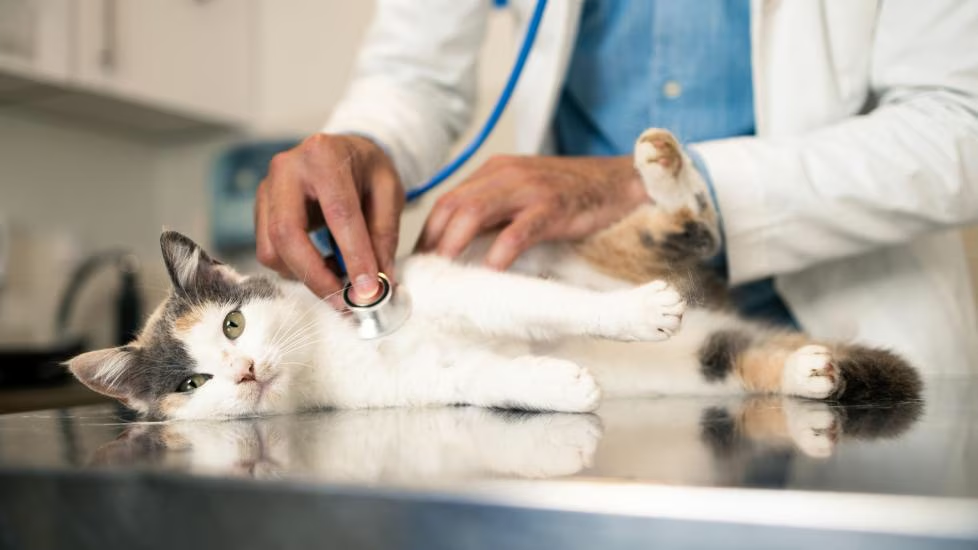Cancer in cats is a significant health concern, affecting thousands of felines each year. Just like humans, cats can develop a variety of cancers that affect their bodies in different ways. While some types of cancer are more common, others are rare but can still be life-threatening. Understanding the types, causes, symptoms, and treatment options for cancer in cats is essential for pet owners who want to ensure their feline companions receive the best care possible.
Common Types of Cancer in Cats
Cancer in cats can affect almost any organ or part of the body. The following are the most commonly diagnosed types:
- Lymphoma
- Lymphoma is one of the most common types of cancer in cats, particularly in older felines. It affects the lymphatic system, which is an integral part of the immune system. Lymphoma can occur in various parts of the body, such as the lymph nodes, abdomen, or chest. Symptoms include weight loss, vomiting, diarrhea, and lethargy.
- Mammary Tumors
- Mammary tumors are common in unspayed female cats, and they can be either benign or malignant. While benign tumors are typically non-cancerous, malignant ones can spread to other parts of the body. Early detection is critical for better outcomes, and spaying female cats before their first heat cycle greatly reduces the risk of developing mammary cancer.
- Squamous Cell Carcinoma (SCC)
- SCC is a type of cancer that typically affects the skin, mouth, or nose of cats. It is known for its aggressive nature and ability to spread quickly. Cats with outdoor access or lighter-colored coats are at a higher risk. Signs include sores or lesions on the skin, mouth ulcers, and difficulty eating or swallowing.
- Fibrosarcoma
- Fibrosarcoma is a tumor that arises from connective tissues, such as muscles, fat, and ligaments. Although it can occur anywhere in the body, fibrosarcomas are often found at the site of previous injury or vaccination. These tumors can be aggressive, and surgical removal is often necessary.
- Hemangiosarcoma
- Hemangiosarcoma is a rare and aggressive cancer that forms in the blood vessels, often affecting organs like the spleen or heart. Cats with hemangiosarcoma may experience sudden symptoms like lethargy, a distended abdomen, and pale gums. This type of cancer often goes undetected until it is at an advanced stage.
- Leukemia
- Feline leukemia virus (FeLV) weakens the immune system and makes cats more susceptible to various cancers, particularly lymphoma. FeLV-positive cats require regular check-ups to monitor for potential cancer development.
- Osteosarcoma
- Osteosarcoma is a type of bone cancer that can affect cats, particularly larger breeds. It is painful and often leads to lameness or swelling in the affected limb. Osteosarcoma is aggressive and requires prompt treatment to manage pain and slow its progression.
Causes of Cancer in Cats
The exact cause of cancer in cats is not always clear, but several factors contribute to its development:
- Genetics
- Some breeds are more prone to certain types of cancer. For example, Siamese cats are more likely to develop lymphoma, while Persian cats may be at greater risk for kidney cancer.
- Environmental Exposure
- Exposure to environmental toxins, such as cigarette smoke, pesticides, or household chemicals, can increase the risk of cancer in cats. Keeping your cat indoors and limiting exposure to carcinogens can help reduce this risk.
- Age
- As cats age, their cells become more vulnerable to mutations that can lead to cancer. Older cats, especially those over the age of 10, are at higher risk due to the natural aging process of the immune system and other bodily functions.
- Hormonal Factors
- Hormonal imbalances, especially in unspayed female cats, can contribute to the development of mammary tumors. Spaying female cats before they reach sexual maturity significantly reduces their risk of developing mammary cancer.
- Chronic Infections or Inflammation
- Chronic infections, such as feline leukemia (FeLV) or feline immunodeficiency virus (FIV), can increase the risk of developing certain types of cancer, particularly lymphoma. Inflammation caused by long-term health issues may also contribute to cancer development.
Symptoms of Cancer in Cats
Recognizing the signs of cancer early can help improve the prognosis and increase the chances of successful treatment. Common symptoms to look out for include:
- Unexplained Weight Loss: Significant weight loss, despite a normal appetite, is a common indicator of cancer in cats.
- Lumps or Bumps: New or growing lumps, particularly under the skin or inside the mouth, should be examined by a vet.
- Changes in Behavior: Cats that become lethargic, stop grooming, or show signs of distress may be suffering from an underlying health condition, including cancer.
- Loss of Appetite or Excessive Thirst: A sudden change in eating habits or increased thirst could indicate a problem with the kidneys, liver, or digestive system.
- Digestive Issues: Vomiting, diarrhea, or constipation that persists over time could signal gastrointestinal cancer.
- Difficulty Breathing or Coughing: Respiratory issues, such as coughing or difficulty breathing, are common signs of lung cancer or cancer affecting the chest.
- Difficulty Eating or Swallowing: Tumors in the mouth, throat, or esophagus can cause difficulty in eating or swallowing, often leading to drooling or refusing food.
Treatment Options for Cancer in Cats
When cancer is diagnosed in a cat, treatment options will vary depending on the type, location, and stage of the cancer. Treatment may include one or more of the following:
- Surgery
- Surgical removal of the tumor is often the first step if the cancer is localized and accessible. If successful, surgery can provide a cure, especially for tumors that have not spread to other areas.
- Chemotherapy
- Chemotherapy is commonly used for cancers that have spread or are difficult to remove surgically. It works by targeting and killing cancer cells throughout the body. While effective, chemotherapy can cause side effects such as nausea, loss of appetite, and hair loss.
- Radiation Therapy
- Radiation therapy is another option for treating localized cancers, particularly when surgery is not an option. It can shrink tumors and alleviate pain. Cats may undergo radiation therapy as a standalone treatment or in combination with surgery and/or chemotherapy.
- Palliative Care
- For cats with advanced cancer, palliative care focuses on improving quality of life rather than curing the disease. Pain management, nutritional support, and maintaining comfort are key aspects of palliative care.
- Immunotherapy
- Immunotherapy is a newer treatment approach that aims to harness the body’s immune system to fight cancer. It is still being researched but shows potential, especially for treating lymphoma and other types of cancer.
Preventing Cancer in Cats
While it’s impossible to prevent all cancers, there are steps that can help reduce the risk:
- Spay or Neuter: Spaying female cats before their first heat cycle significantly reduces the risk of mammary cancer, while neutering male cats reduces the risk of testicular cancer.
- Limit Exposure to Carcinogens: Keep your cat indoors and avoid exposing them to harmful chemicals such as pesticides, cigarette smoke, and household cleaners.
- Regular Veterinary Check-Ups: Routine vet visits are essential for detecting early signs of cancer. Regular check-ups, including blood tests and screenings, can help identify potential problems before they become severe.
Conclusion
Cancer is a serious health issue in cats, but with early detection and appropriate treatment, many cats can lead fulfilling lives. By staying vigilant and being aware of the signs and symptoms of cancer, you can help ensure your cat receives the best possible care. Regular veterinary visits, a healthy lifestyle, and timely interventions can greatly improve the chances of successful treatment, allowing your feline companion to enjoy a happy, healthy life.

